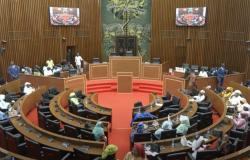The Australian and New Zealand dollars were in a pensive mood on Wednesday, awaiting developments on US inflation and interest rates that could cause waves in currency and bond markets.
The Australian dollar rose 0.1% to $0.6613, having barely moved in the past 24 hours. Support lies at the weekly low at $0.6576, with resistance at $0.6615 and $0.6681.
The Kiwi dollar strengthened by a fraction to $0.6142, after hitting a low of $0.6100 earlier in the week. Resistance lies at the recent three-month high of $0.6215.
Chinese inflation data missed forecasts with consumer prices falling 0.1% in May, although the implications are mixed as they highlight weak domestic demand while strengthening the case for inflation. favor of greater stimulation.
That was just a preview of the U.S. consumer price report, which is expected to show a smaller 0.1% rise in May, with the index up 0.3%. reference. The range of forecasts suggests that core risk is tilting to the downside, which would be a relief to markets and the Federal Reserve.
However, at the Fed’s policy meeting, it is likely that its rate cut projections this year will be reduced from three to two, or even just one.
Markets have already cut easing expectations for this year to 39 basis points – they were well above 100 basis points in January – but a more optimistic outlook from the Fed would continue to put pressure on the rise in bond yields and the US dollar.
Such an outcome would also support market bets that the Reserve Bank of Australia (RBA) will not carry out easing for some time.
The central bank meets next week and is seen as certain to keep rates at 4.35%, while reiterating that it is not ruling out further hikes if necessary.
Markets have all but given up hope of a cut this year and now view April as the first likely window for easing.
“Nothing in local data in recent weeks has called into question the market view that the most likely scenario is a prolonged hold at the current interest rate,” said Ray Attrill, head of the foreign exchange strategy at NAB.
“There are significant risks that the next move will be upward if the second quarter consumer price index at the end of July were to shock, or if the first reduction, which we and many other analysts have predicted for November, came later. (Reporting by Wayne Cole; Writing by Stephen Coates)






